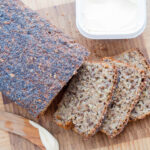
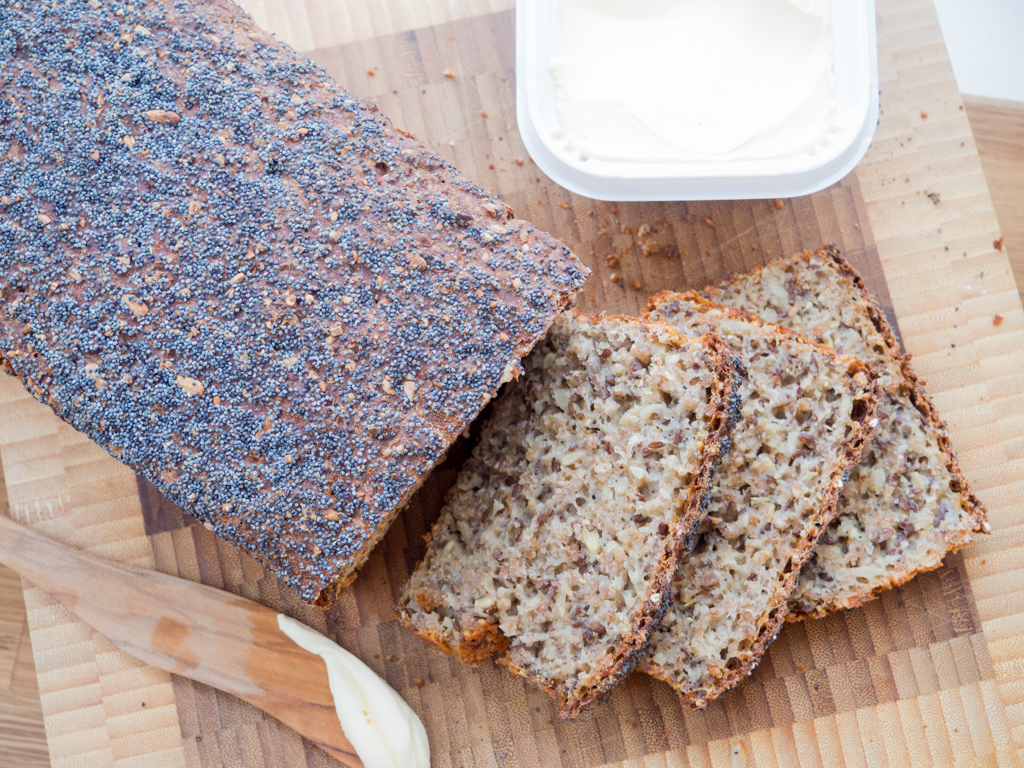
This recipe I have posted here on this page is one of my favorite types of bread - the Nordic Rye Bread. This is actually the third recipe I have here on my blog for Rye Bread, but I simply just like it so much that I need different variations of this bread.
First Time Making Rye Bread?
If it is you first time you are making a Danish Rye Bread I will recommend you to follow my other recipe for Rye Bread made without sourdough. If you are looking for the most traditional recipe for rye bread, you should follow the recipe where the sourdough is used. Find both recipes in the section with bread.
Easy recipe for Nordic Rye Bread
As I have described just below, I love to experiment with different types of bread.
This recipe, for rye bread, is a result of this experimenting. A traditional Danish Rye Bread is made and based on a Sour Dough. A sour dough is a sour liquid dough packed with great bacteria, which are great as a rising agent for bread and especially rye bread.
The recipe I have listed below does not use sour dough but instead fresh yeast. The sourdough gives the bread a taste that is more traditional but I personally think fresh yeast does a good job as well.
In Denmark and the other Nordic countries, rye bread is typically served as a part of a lunch. The bread is cut in slices and served with all kinds of different topping like ham, beef, eggs, fish filet and so on - basically everything eatable food that you like.
Besides rye bread, you can find all kinds of delicious types breads in my bread section. I will recommend the walnut bread and the birthday buns.
Instructions for Rye Bread without sour dough
Because this rye bread is make without sourdough, which typically takes about 4-5 days to prepare from scratch, it is actually easy to make this delicious bread.
In a large bowl, you start by adding lukewarm water and dissolve the fresh yeast in it. Then you add the rest of the ingredients except the flour and the poppy seeds. When everything is mixed well, step-wise add the all-purpose flour and stir well in-between. Now the rye bread dough should be like a thick porridge.
Coat/spray the inside of a bread pan with butter and pour the dough into it. Cover the bread pan with a dishtowel and set it aside to rise for about 1 1/2 hours. Finally, bake the bread at 180 C (360 F) for approximately 1 hour and 20 minutes. When done, let the bread cool off on an oven rack before cutting slices off it.

Ingredients
- 25 g fresh yeast (or equivalent dry yeast)
- 5 dl buttermilk
- 2 dl lukewarm water
- 1 tbsp honey (or malt syrup)
- 1/2 tbsp salt
- 2 dl cracked rye kernels
- 1 dl sunflower seeds
- 1 dl flax seeds
- 1/2 dl sesame seeds
- 2 dl whole wheat flour
- 4.5 dl all-purpose flour
- 50 g black poppy seeds
Instructions
- In a large bowl; dissolve the yeast in the lukewarm water.
- Add the rest of the ingredients except the all-purpose flour and poppy seeds. Stir to mix everything.
- Complete the rye bread dough by adding the all-purpose flour step-by-step. Stir well in-between each step. The consistency of the dough should be like a thick porridge.
- Set the dough aside somewhere warm and cover the dough with a clean dishtowel. Let it rise for about 1 hour.
- Spray/coat the inside of a bread pan with some butter.
- Pour the dough into the bread pan and sprinkle the top with poppy seeds.
- Cover the bread pan with a clean dishtowel and set it aside some place warm for about 1 1/2 hours. This will let the rye bread rise.
- Bake the bread at 180 C (360 F) for about 1 hour and 20 minutes. It is important to keep an eye on the bread during this time as the baking time might variate a little bit. The bread is done when it sound hollow when 'knocking' on it.
- When the bread is done, remove it from the bread pan and let it cool off on an oven rack. It is normally a good idea to wait until the bread is cooled off before cutting it.


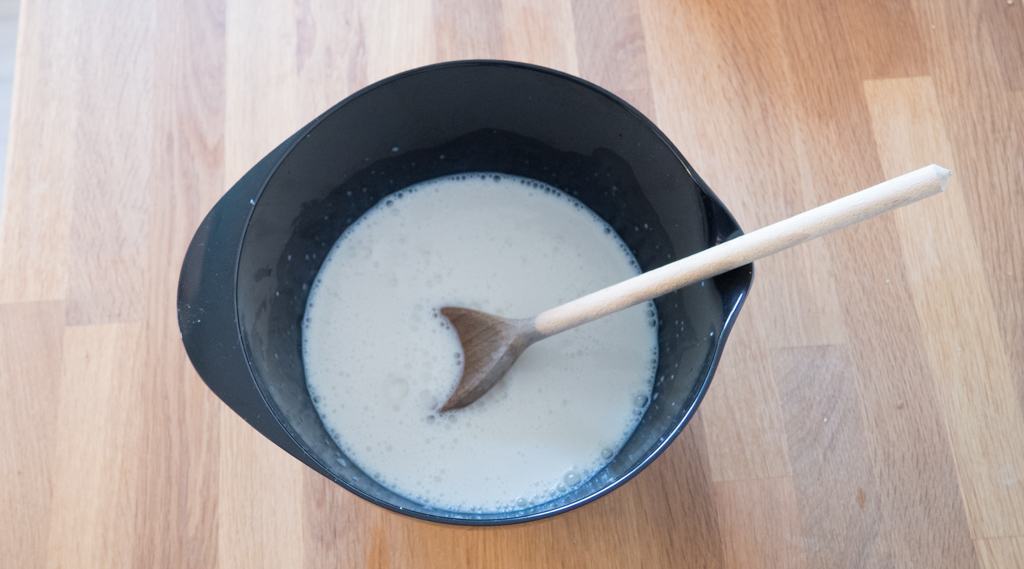
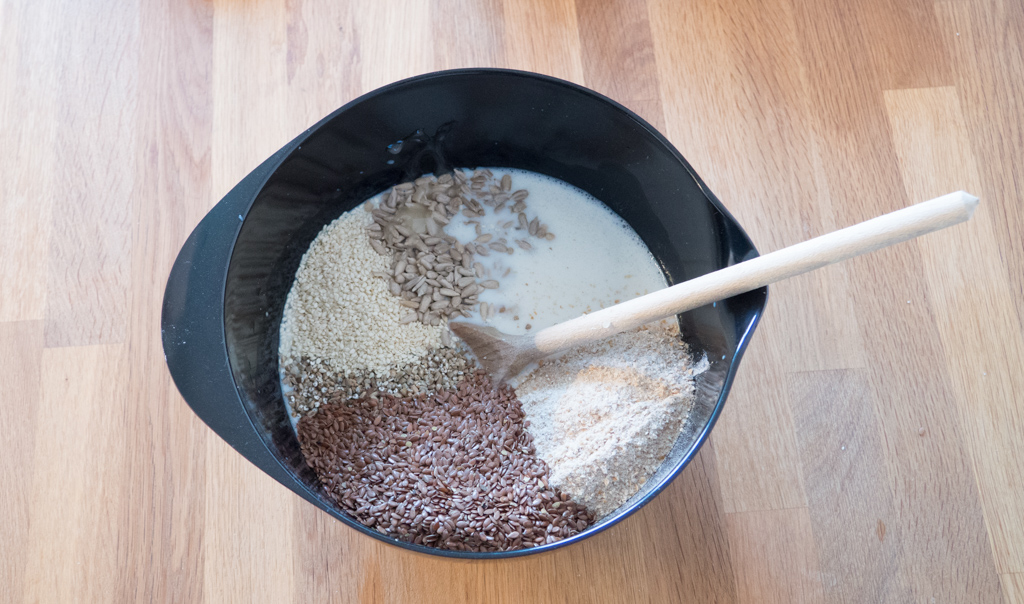
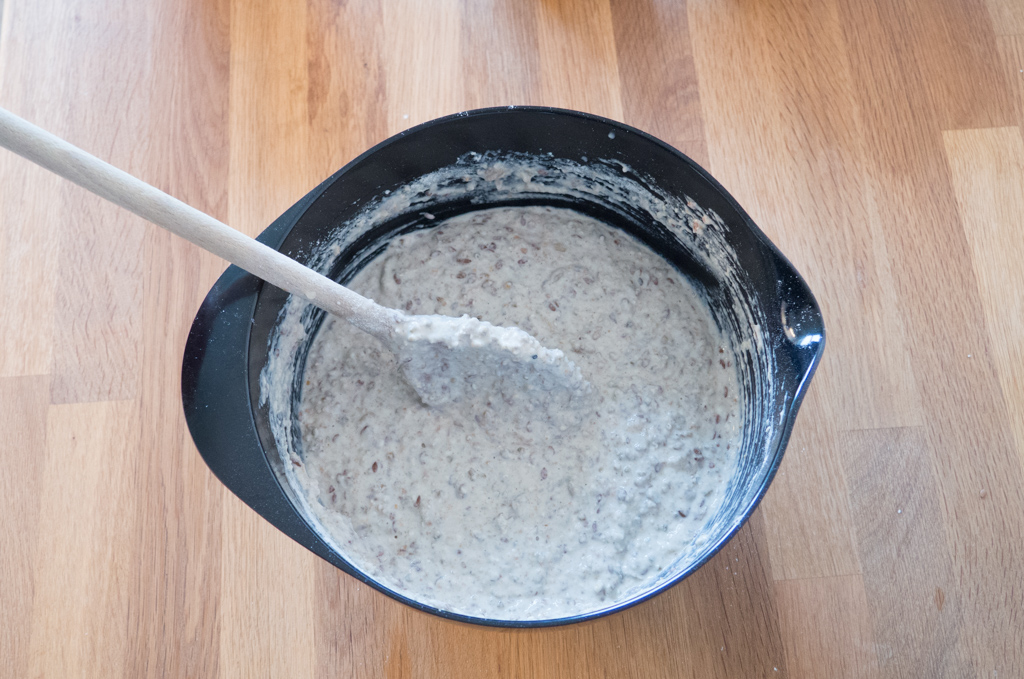
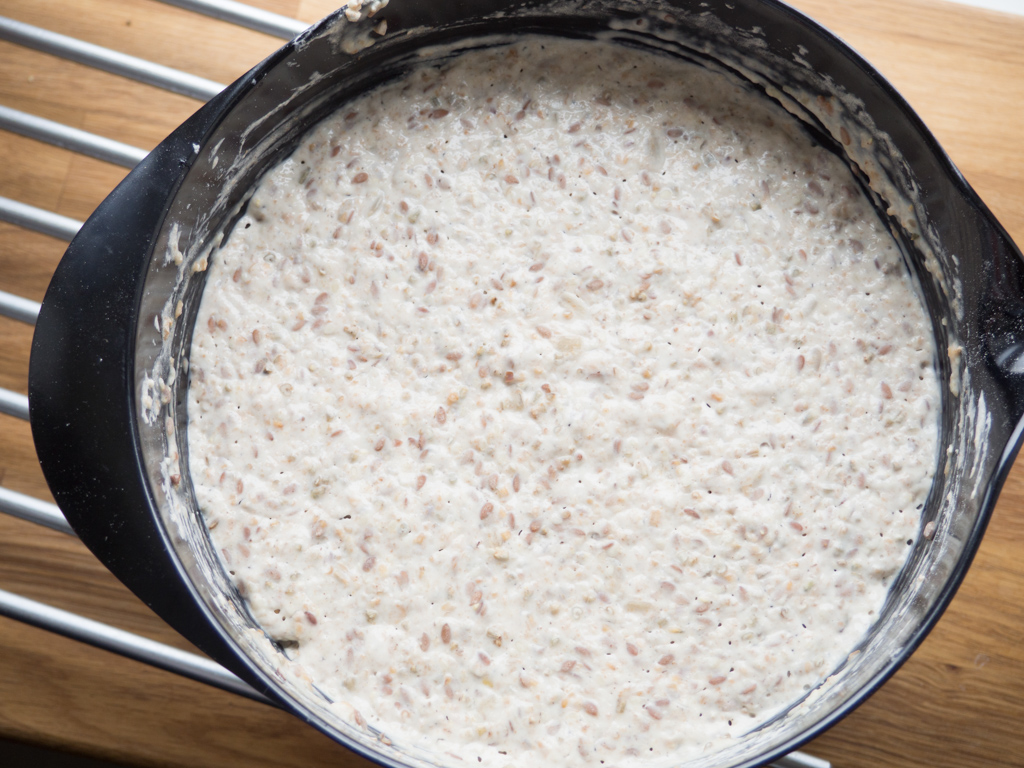
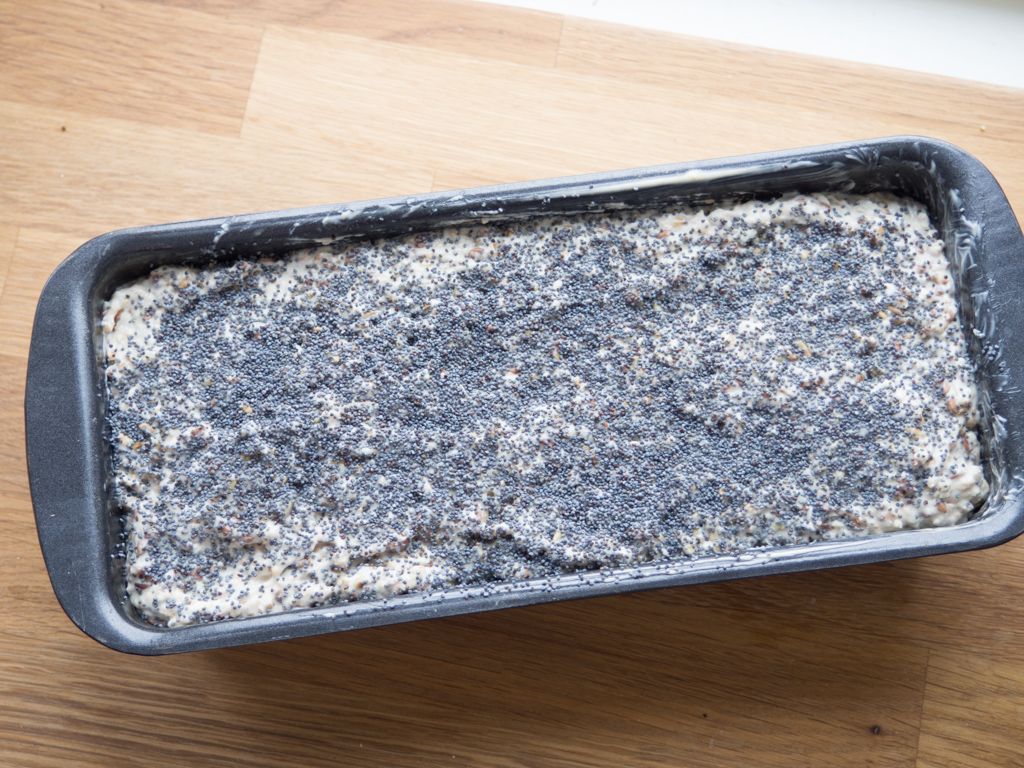
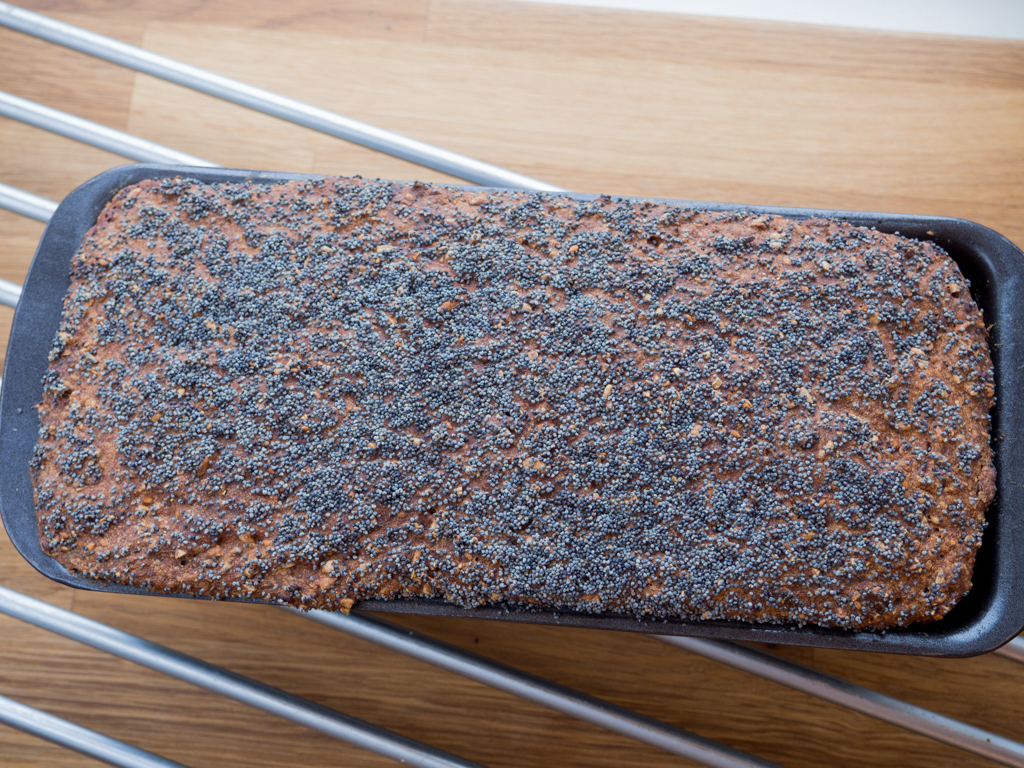
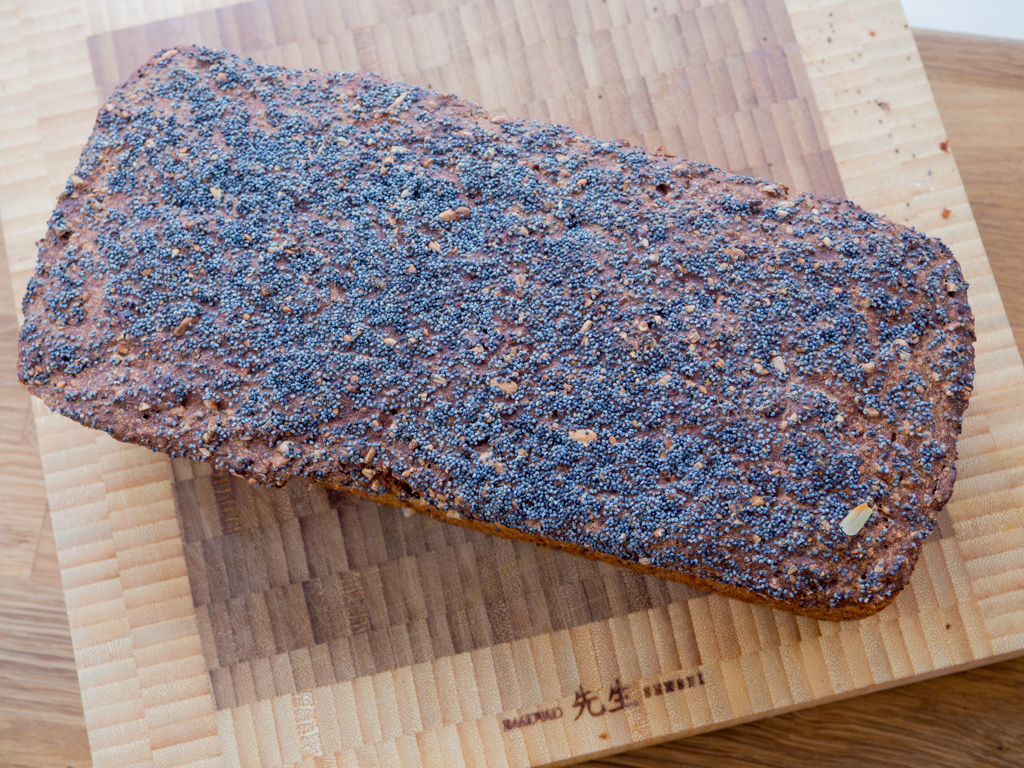
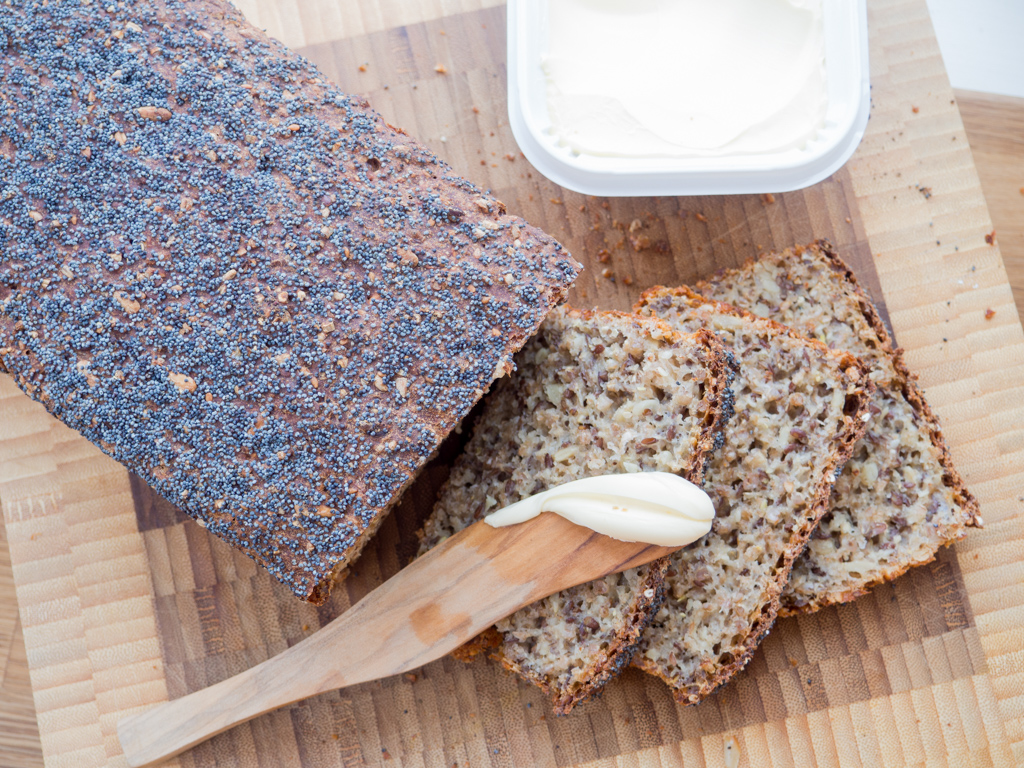
kate
Hello from Thailand. Thanks so much for this recipe. I made one this morning, it turn out quite good though I didn't have a perfect ingredient as you recommend.
Pamela Clare
My loaf is rising in the pan. Jeg glæder mig sindsyg meget at smage det. Jeg er lige begyndt at bage mit eget rugbrød. Jeg bor i Colorado/USA hvor man kan overhed ikke finde rigtig dansk rubrød.
Inga
I think I’ll stick to the sourdough version which I love and have great success with. This one doesn’t appear to have much Rye in it.
But thanks for posting.
Kim Nielsen
Sure, the sour dough version of rye bread is the most traditional way of making Danish rye bread. However, this recipes gives a pretty good result as well. :-)
Gina Bisaillon
I'm a great fan of your original Danish Rye, but I look forward to trying this version too.
Gina Bisaillon
I'm a great fan of your original Danish Rye, but I look forward to trying this version too.
Jade
I love the smell of freshly baked bread! Thanks for the recipe! Going to try it out this weekend!
Kim Nielsen
You are welcome. I hope that you will enjoy it
David commander
Hi, in some of your recipes appears the abbreviation 'dl'. What does this mean? BTW, I am going to try your frikadella recipe very soon!
Kim Nielsen
That is a good question. The abbreviation dl means deciliter, which is a European way of measuring volumen. Normally used to liquids. I am trying to list all my recipes using both dl and cups. You can use Google to convert between dl and cups. Just type "1 dl to cups" and it will give you the answer. Let me know if you have any other questions.
Alex
Super! Haha you here use the ''volumen'' instead of ''the volume''. I studied in Denmark and Norway for 2 years and when I see the ''xxxxxen'' or ''xxxxet'' I feel so warm. Now I am studying in the USA and miss the nordic food badly. I see your website and will start to try the rugbroed with sour dough soon. Thank you so much for sharing the recipe.
Kim Nielsen
Yes you are right - use the word "volumen" and "volume" back-and-forth - It's an authentic Nordic blog HAHA :-) I hope that you will success with the rugbroed. Regdars Kim (NordicFoodLiving.com)
ROBERT GOLDMAN
Your recipe has no kneading. Is this correct?
Kim Nielsen
Yes - you only mix the ingredients into thick and sticky dough
Linda Dian Heavin
What does "dl" mean?
Kim Nielsen
That is a good question. "dl" means deciliter and is an European way of measuring volumen. It's similar to the US cup. 1 dl is equivalent to 2/5 cup. On the recipe there is a button called "US customary" if you click that button then you get the US units of the recipe. I hope that answers your question. Regards Kim (NordicFooeLiving.com)
Shannon R
Your blog is amazing. Beautiful pictures and recipes look very appetizing. I can't wait to have time to make some of your amazing breads. You did a lot of work to make recipe conversions as well as original. Thank you and please keep up the beautiful blog.
Kim Nielsen
You are welcome - I am just happy that you like my blog and my Nordic recipes :-) Regards Kim (NordicFoodLiving.com)
Linda Estes
I am so happy I found this blog and your recipe on Rye Bread. I live in the US and need to have some good Rye Bread available, can't live w/o it. I used to buy the mix they sold at Ikea but is no longer available, and the German slices you buy in some Stores are not only expensive but not any where near as good as home made Rye Bread. I have never made this before so am looking forward to see how easy it is.
Linda Estes
Hej Kim,
I live in the US, and have a packet of Instant SourDough (Yeast+Sourdough Culture) I have never used anything like this before and have no clue as to how it could be incorporated into making this RyeBread recipe. it says .63 oz=18g on the packet, do you have any idea if this is worth using in the above recipe and/or how to use it?
Thanks!
Kim Nielsen
Hi Linda. I'm not familiar with the instant sourdough mixture. In Denmark the most common way of making rye bread is with a traditional sourdough. However, the second (and more easy) way of making rye bread is with normal fresh yeast like I have done in the "easy rye bread recipe". I would suggest that you try the "easy rye bread" recipe from my site as a start. Regards Kim (NordicFoodLiving.com)
Bea
Delicious!
What size baking tin do you use?
Thanks!
Kim Nielsen
I normally use my baking tin size 35 x 14 x 6 cm (14 x 5 x 2 inch). Regards Kim (NordicFoodLiving.com)
John
Hi, I really like the recipe and am about to try it as my sourdough starter should be ready today or tomorrow. However, although it is easy to convert, for us who are used to “grams”, “decilitre” isn’t as intuitive. Thank you for the recipe though.